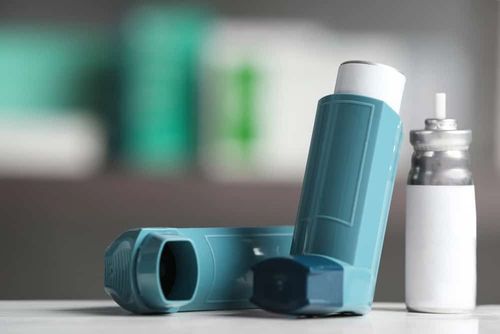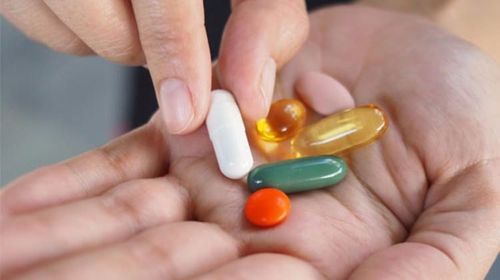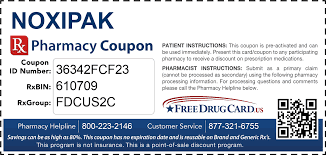This is an automatically translated article.
Betamethasone drug is used to treat diseases such as arthritis, blood / hormone / immune system disorders, allergic reactions in the skin and eyes, breathing difficulties, ... What does Betamethasone drug do, how to use it? Let's find out the use of Betamethasone through the article below.
1. What is Betamethasone?
Betamethasone is a corticosteroid hormone (glucocorticoid). It reduces the body's natural defense response and relieves symptoms such as swelling and allergies.
Generic name (Active ingredient): Betamethasone (Betamethasone)
Drug type: Glucocorticoid
Drug form and strength:
Tablets: 0.5 mg, 0.6 mg Injection: 4 mg/mL Cream drug: 0 0.05%, 0.1% Ointment, gel: 0.05%; 0.1% Syrup: 0.6 mg/5 mL Enema solution: 5 mg/100 mL
2. Uses of Betamethasone
2.1 Indications Rheumatic diseases: Rheumatoid arthritis, acute and subacute bursitis, epicondylitis, acute nonspecific tenosynovitis, myositis, fibromyalgia, tendinitis, psoriatic arthritis .
Diseases of the colloid system: Systemic lupus erythematosus, scleroderma, polymyositis.
Allergic conditions: Asthma attacks, chronic bronchial asthma, seasonal or year-round allergic rhinitis, severe allergic bronchitis, atopic dermatitis, hypersensitivity reactions to drugs and insect stings (bites) ).
Skin diseases: Localized infiltrative lesions, hypertrophy of the lichen planus, psoriasis, keloids, discoid lupus erythematosus, erythema multiforme (Stevens - Johnson syndrome), exfoliative dermatitis, contact dermatitis touch.
Endocrine diseases: primary or secondary adrenocortical insufficiency (used in combination with mineralocorticoids), congenital adrenal hyperplasia, non-fissuring thyroiditis and cancer-induced hypercalcemia.
Eye diseases: Inflammatory and allergic processes in the eye and adnexa, e.g. allergic conjunctivitis, keratitis, diffuse posterior and choroidal choroiditis, optic neuritis.
Respiratory diseases: Symptomatic sarcoidosis, pneumothorax, pulmonary fibrosis, prevention of acute respiratory failure and intraocular bleeding in premature infants.
Blood diseases: Spontaneous or secondary thrombocytopenia in adults, acquired hemolytic anemia (autoimmune), transfusion reaction.
Digestive diseases: Autoimmune chronic hepatitis and colon diseases, progressive Crohn's disease and bleeding ulcerative colitis.
Cancers: Temporary treatment of leukemia and lymphoma in adults and acute leukemia in children.
Nephrotic syndrome: To lower proteinuria and edema in nephrotic syndrome without uremia or due to lupus erythematosus.
2.2 Dosage - Administration Adults:
Betamethasone or betamethasone phosphate is given orally. The usual dose is 0.5 - 5 mg/day (calculated on betamethasone base). Sodium phosphate esters can be administered intravenously, intravenously or intramuscularly with the usual dose of 4-20 mg betamethasone. The drug can also be administered topically into soft tissues with a dose equivalent to 4 to 8 mg of betamethasone. The sodium phosphate ester form can sometimes be used in combination with the acetate ester or dipropionate, which is a slower-acting and longer-lasting form. Betamethasone sodium phosphate is also used topically in the treatment of allergic and inflammatory diseases of the eyes, ears or nose, as 0.1% drops or ointments.
Benzoate esters, dipropionate and valerate betamethasone are widely used in the treatment of various skin diseases. The commonly used concentrations of betamethasone base are 0.05% or 0.1%.
Betamethasone valerate has also been used by inhalation for asthma prevention with an initial dose of 200 micrograms, four times a day.
Children:
Children under 1 year: Slow intravenous injection of 1 mg. Children from 1 to 5 years old: Slow intravenous injection of 2 mg. Children from 6 to 12 years old: 4 mg by slow intravenous injection. The dose may be repeated 3-4 times in 24 hours, if necessary, depending on the condition being treated and the clinical response. 2.3 Overdose - Missed dose and management Overdose:
Symptoms of corticosteroid overdose include: sodium and water retention effects, increased appetite, calcium and phosphorus mobilization with osteoporosis, nitrogen loss, increased glucose blood loss, decreased tissue regeneration, increased risk of bacterial infections, secondary fungal infections, adrenal insufficiency, increased adrenal cortex activity, mental and neurological disorders, muscle weakness.
Treatment:
In case of acute overdose, monitor electrolytes and urine, with special attention to sodium and potassium balance.
In case of chronic toxicity, discontinue the drug gradually. Treat electrolyte imbalance if needed..
3. Betamethasone side effects
Common:
Potassium loss, sodium retention, water retention; Menstrual irregularities, development of Cushing's syndrome, growth inhibition of the fetus and young child, decreased glucose tolerance, presentation of latent diabetes mellitus, increased insulin or hypoglycemic drug requirements in diabetics Street ; muscle weakness, loss of muscle mass, osteoporosis, skin atrophy, aseptic abscess.
Uncommon:
Mood swings, major depression, insomnia; glaucoma, cataracts; peptic ulcer, pancreatitis, abdominal distension, esophagitis.
Rare:
Atopic dermatitis, urticaria, angioedema; benign intracranial hypertension. Frequency not known Anaphylactic or hypersensitivity reactions, hypotension, shock.
4. Note when using Betamethasone drug
Contraindications:
People with diabetes, mental illness, bacterial infections, viral infections, systemic fungal infections. Hypersensitivity to betamethasone, other corticosteroids or to any of the ingredients in the preparation. Notes and cautions:
The lowest possible dose of betamethasone must be used to control the disease being treated; When reducing the dose, it must be gradually reduced to avoid the risk of acute adrenal insufficiency.
When using systemic corticosteroids, caution must be exercised in cases of congestive heart failure, recent myocardial infarction, hypertension, diabetes mellitus, epilepsy, glaucoma, hypothyroidism, liver failure, osteoporosis, peptic ulcer and duodenum, psychosis and renal failure.
In children and the elderly, betamethasone may increase the risk of some unwanted effects, in addition to slowing growth in children.
Due to its immunosuppressive effect, the use of betamethasone in high doses often increases the risk of secondary bacterial and fungal infections. In case of acute infection not controlled with appropriate antibiotics, betamethasone is not indicated.
People with active or suspected latent TB should not use betamethasone except in cases of adjuvant treatment with anti-TB drugs. When long-term corticosteroid therapy is used in patients with latent tuberculosis, close monitoring and anti-tuberculosis prophylaxis should be used.
Immune response is reduced with systemic corticosteroids, increasing the risk of chickenpox, and possibly severe Herpes zoster infection so exposure to these diseases must be avoided.
Live vaccines should not be given to patients receiving high-dose systemic corticosteroid therapy for at least the following 3 months. However, lethal or toxoid vaccines can be used, although response may be reduced.
For eyes:
Prolonged use of corticosteroids can cause cataracts (especially in children), glaucoma with the possibility of damage to the optic nerve. During prolonged corticosteroid therapy, patients should be monitored regularly, sodium intake should be reduced, and calcium and potassium should be added to the body. Rapid intravenous administration of large doses of corticosteroids can sometimes cause cardiovascular collapse, so it must be given slowly or by infusion.
Local injection into soft tissue or in joints should ensure absolute sterility.
Care should be taken when using topical drugs on a large area, damaged skin, prolonged use or applied with a bandage for children, because the drug can be absorbed and inhibit the hypothalamic-pituitary-adrenal axis. kidneys leading to systemic adverse effects.
For oral forms of betamethasone containing sodium benzoate should not be used in infants because it may cause some adverse effects on the cardiovascular, respiratory and neurological of children.
Note to pregnant women
Level of safety for pregnant women: category C (according to classification of the US Food and Drug Administration, FDA). The use of corticosteroids during pregnancy must weigh the benefits and risks to the mother and fetus. The neonate must be carefully monitored for signs of decreased adrenal function if the mother has received significant corticosteroids during pregnancy. Caution for nursing women
The drug is excreted in breast milk and may harm the baby because the drug has the ability to inhibit growth, causing side effects (reduced adrenal function). Weigh the benefits to the mother and the potential harm to the infant.
Precautions when driving and operating machines
Studies on the effects of betamethasone on the ability to drive and use machines have not been studied.
5. Drug interactions
Interactions with other drugs:
Paracetamol : When corticosteroids are taken with high or prolonged doses of paracetamol there is an increased risk of hepatotoxicity. Tricyclic antidepressants: May increase corticosteroid-induced psychosis. Diabetes medications or insulin: Betamethasone may increase blood glucose levels. Glycoside digitalis: Concomitant administration of betamethasone may increase the risk of arrhythmias or digitalis toxicity associated with hypokalemia. Phenobarbital, phenytoin, rifampicin or ephedrine may increase the metabolism of corticosteroids, reducing their therapeutic effects.
Patients receiving both corticosteroids and estrogens should be monitored for excessive corticosteroid effects because estrogen can decrease clearance, increase half-life, increase therapeutic effects and toxicity of glucocorticoids.
Concomitant use of corticosteroids with coumarin-type anticoagulants may increase or decrease the anticoagulant effect.
The combined effect of nonsteroidal anti-inflammatory drugs or alcohol with glucocorticoids may increase the occurrence or severity of peptic ulcers. Corticosteroids can increase blood levels of salicylate.
When taking betamethasone may increase the concentration or effect of cholinesterase inhibitors, amphotericin B, cyclosporine, loop diuretics, natalizumab, thiazide diuretics.
Drugs when used together will increase the concentration or effect of betamethasone such as azole antifungals, calcium channel blockers, quinolone antibiotics, macrolides, trastuzumab.
Drug interactions can change how the drug works or increase the effect of side effects. This document does not cover all possible drug interactions. Write a list of all the medicines you are taking (including prescription, nonprescription and dietary supplements) and show them to your doctor or pharmacist.
Please dial HOTLINE for more information or register for an appointment HERE. Download MyVinmec app to make appointments faster and to manage your bookings easily.













